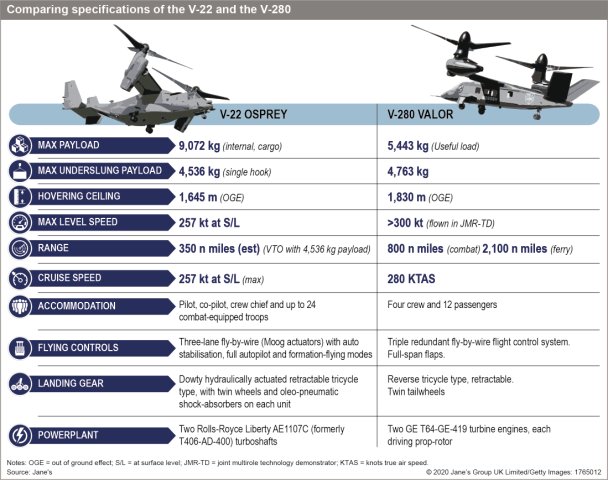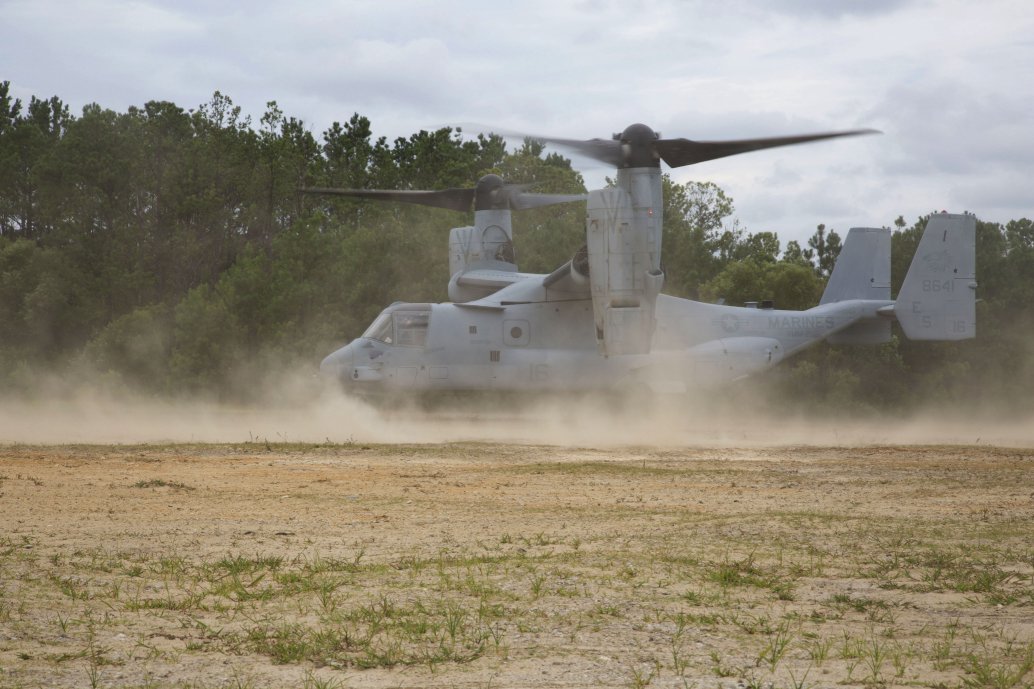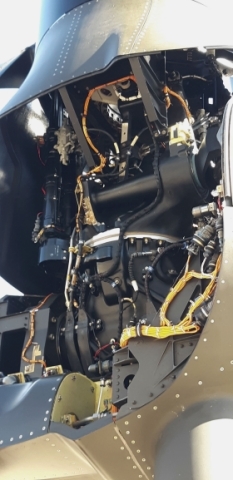- About
- Intara
- Capabilities
- Advisory
- Resources
- News
- Store
- Home
- News
- Forty years on from the V-22's conception, Bell applies engineering lessons learned to the V-280
20 April 2020
Forty years on from the V-22's conception, Bell applies engineering lessons learned to the V-280
by Pat Host
The United States in April 1980 failed an attempt to rescue US hostages from its embassy in Tehran in Operation ‘Eagle Claw’. Although the mission failed, it helped inspire the Bell Boeing V-22 Osprey multimission tiltrotor – an aircraft that could fly long distances and land vertically.
In the 40 years since the V-22 was conceived, Bell has gathered and applied tiltrotor engineering lessons to the V-280 Valor multimission aircraft it is developing for the US Army. Many of the challenges in developing and operating the V-22 are the result of designing a fairly large platform to operate within the confines of US Marine Corps amphibious ships. This caused several compromises, such as a smaller proprotor diameter, which increases the download and reduces the hover efficiency, and a shorter wing, which reduces the amount of lift and range.
These engineering lessons and the lack of shipboard size constraints enabled Bell to reduce the downwash from the rotors, design the rotors to tilt from horizontal to vertical without rotating the engines, and improve the reliability and availability of components. The V-22’s downwash, or high velocity air from the two tilting proprotors producing 22,680 kg of thrust to keep the aircraft aloft, can damage objects or injure people below. It also means the Osprey must burn more fuel to hover.

Comparing specifications of the V-22 Osprey and the V-280 Valor (Janes)
In addition, the V-22 required a rear-ramp exit to avoid hot-engine exhaust blasting onto ship decks and grassy landing zones. As the V-280’s engines do not rotate, this solves the hot engine exhaust issue, which can start brush fires, and means troops can ingress and egress via side doors.
Keith Flail, Bell vice-president for advanced vertical lift systems, told Jane’s


Already a Janes subscriber? Read the full article via the
Client Login
Interested in subscribing, see What we do
The United States in April 1980 failed an attempt to rescue US hostages from its embassy in Tehran i...
Associated services
 Details
Details 